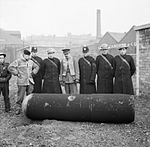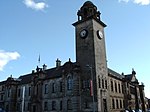John Brown & Company

John Brown and Company of Clydebank was a Scottish marine engineering and shipbuilding firm. It built many notable and world-famous ships including RMS Lusitania, RMS Aquitania, HMS Hood, HMS Repulse, RMS Queen Mary, RMS Queen Elizabeth and the Queen Elizabeth 2. At its height, from 1900 to the 1950s, it was one of the most highly regarded, and internationally famous, shipbuilding companies in the world. However thereafter, along with other UK shipbuilders, John Brown's found it increasingly difficult to compete with the emerging shipyards in Eastern Europe and the far East. In 1968 John Brown's merged with other Clydeside shipyards to form the Upper Clyde Shipbuilders consortium, but that collapsed in 1971. The company then withdrew from shipbuilding but its engineering arm remained successful in the manufacture of industrial gas turbines. In 1986 it became a wholly owned subsidiary of Trafalgar House, which in 1996 was taken over by Kvaerner. The latter closed the Clydebank engineering works in 2000. Marathon Manufacturing Company bought the Clydebank shipyard from UCS and used it to build oil rig platforms for the North Sea oil industry. Union Industrielle d'Entreprise (UIE) (part of the French Bouygues group) bought the yard in 1980 and closed it in 2001.
Excerpt from the Wikipedia article John Brown & Company (License: CC BY-SA 3.0, Authors, Images).John Brown & Company
Queens Quay Main Avenue,
Geographical coordinates (GPS) Address Nearby Places Show on map
Geographical coordinates (GPS)
| Latitude | Longitude |
|---|---|
| N 55.897786 ° | E -4.404423 ° |
Address
Queens Quay Main Avenue
Queens Quay Main Avenue
G81 1DZ , Kilbowie
Scotland, United Kingdom
Open on Google Maps








